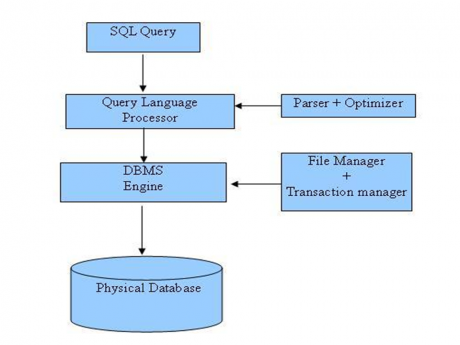Welcome to the SQL Tutorial. The intent of these tutorials is to provide in depth understanding of SQL Programming Language. In these tutorials, we will cover topics such as SQL Indexes, SQL syntax, SQL Joins, SQL Sub Queries, SQL Sequences, SQL Date Functions, SQL Sorting, SQL Operators and many more. In addition to free SQL Tutorial, you can find interview questions, how to tutorials and issues and their resolutions.

SQL is an ANSI (American National Standards Institute) standard but there are many different versions of the SQL language.
SQL tutorial gives unique learning on Structured Query Language and it helps to make practice on SQL commands which provides immediate results. SQL is a language of database, it includes database creation, deletion, fetching rows and modifying rows etc.
SQL is an ANSI (American National Standards Institute) standard but there are many different versions of the SQL language.
SQL is structured Query Language which is a computer language for storing, manipulating and retrieving data stored in relational database.
SQL is the standard language for Relation Database System. All relational database management systems like MySQL, MS Access, Oracle, Sybase, Informix, Postgres and SQL Server uses SQL as standard database language.
Also they are using different dialects, Such as:
MS SQL Server using T-SQL Oracle using PL/SQL MS Access version of SQL is called JET SQL (native format ) etc.
Allow users to access data in relational database management systems. Allow users to describe the data. Allow users to define the data in database and manipulate that data. Allow to embed within other languages using SQL modules, libraries & pre-compilers. Allow users to create and drop databases and table. Allow users to create view, stored procedure, functions in a database. Allow users to set permissions on tables, procedures, and views
1970 -- Dr. E.F. "Ted" of IBM is known as the father of relational databases. He described a relational model for databases. 1974 -- Structured Query Language appeared. 1978 -- IBM worked to develop Codd's ideas and released a product named System/R. 1986 -- IBM developed the first prototype of relational database and standardized by ANSI. The first relational database was released by Relational Software and its later becoming Oracle.
When you are executing an SQL command for any RDBMS, the system determines the best way to carry out your request and SQL engine figures out how to interpret the task. There are various components included in the process. These components are Query Dispatcher, Optimization engines, Classic Query Engine and SQL query engine etc. Classic query engine handles all non-SQL queries but SQL query engine won't handle logical files.
Following is a simple diagram showing SQL Architecture:

The standard SQL commands to interact with relational databases are CREATE, SELECT, INSERT, UPDATE, DELETE, and DROP. These commands can be classified into groups based on their nature:
| Command | Description |
| CREATE | Creates a new table, a view of a table, or other object in database |
| ALTER | Modifies an existing database object, such as a table. |
| DROP | Deletes an entire table, a view of a table or other object in the database. |
| Command | Description |
| INSERT | Creates a record |
| UPDATE | Modifies records |
| DELETE | Deletes records |
| Command | Description |
| GRANT | Gives a privilege to user |
| REVOKE | Takes back privileges granted from user |
| Command | Description |
| SELECT | Retrieves certain records from one or more tables |
You liked the article?
Like: 1
Vote for difficulty
Current difficulty (Avg): Medium

TekSlate is the best online training provider in delivering world-class IT skills to individuals and corporates from all parts of the globe. We are proven experts in accumulating every need of an IT skills upgrade aspirant and have delivered excellent services. We aim to bring you all the essentials to learn and master new technologies in the market with our articles, blogs, and videos. Build your career success with us, enhancing most in-demand skills in the market.